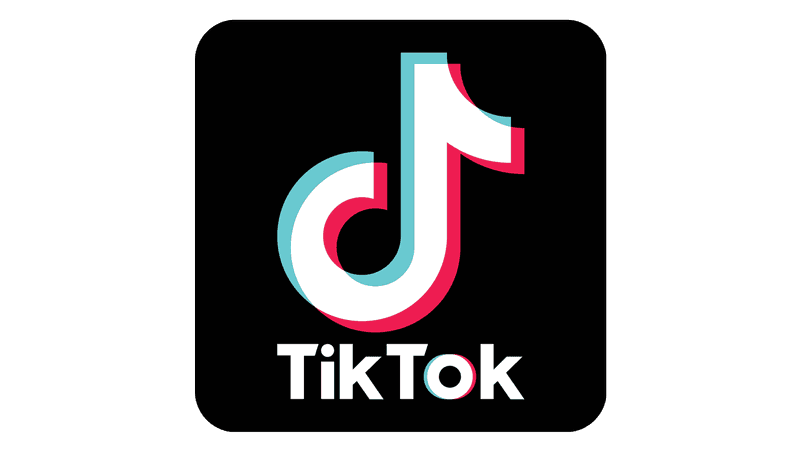
With the right structure and approach, you can create a compelling and professional introduction that captures your audience's attention. Here’s a step-by-step guide to help you master the beginning of your sales pitch. Begin with a warm and professional welcome, addressing your prospect by name.
Why Bother with Discovery?
Many salespeople instinctively avoid conducting thorough Discovery, eager to dive straight into pitching their product or service. This approach stems from a misconception: the salesperson assumes they can pitch effectively without understanding the prospect’s unique needs. However, neglecting Discovery is a critical error for two major reasons:
Tailored Solutions: Every business faces distinct challenges that your product or service can address in various ways. Understanding these specific circumstances ensures you can clearly articulate how your solution meets their needs. Without this insight, you leave it to the buyer to figure out why they should invest, diminishing your role and value in the process.
Building Trust and Closing Deals: If you genuinely aim to help your clients solve their problems, believing in your product's capability to do so, you’re more likely to close deals and increase your commission. Discovery is the essence of consultative sales. Without it, you’re merely delivering demos and hoping for the best. This approach often leads to missed targets, misplaced blame, and career dissatisfaction.
Why Should Prospects Answer Your Questions?
Prospects allocate precious time to understand your product, often less than you'd prefer. While it might seem that every second not spent pitching is wasted, this is a fallacy. Tailoring your demo to the specific company you’re addressing is a far better use of time. In numerous pitches—whether giving, supporting, or receiving—I’ve seen assumptions derail presentations that could have been corrected with a simple question taking less than 20 seconds.
When you skip Discovery, you lose credibility and the opportunity to demonstrate genuine problem-solving intent. Your job is to make the prospect comfortable answering your questions by showing that their input will lead to a more relevant and beneficial product explanation. This process starts with the beginning of the call and continues through strategic questioning.
Instigate Questioning
Benefits for the Prospect When a Salesperson Asks Questions
Clarity on Needs and Goals: Asking questions helps prospects articulate their needs, goals, and challenges, often uncovering underlying issues they hadn’t fully considered.
Personalised Solutions: Customising your pitch to their specific situation shows your dedication to finding the best solution, not just selling a product.
Building Trust and Rapport: Engaging in a two-way conversation where the prospect feels valued helps build trust and rapport, increasing the likelihood of future business.
Enhanced Understanding of the Product: Questions help prospects understand how your product or service specifically benefits them, making their decision-making process easier and more informed.
Addressing Concerns Early: Early identification of potential objections or concerns allows you to address them proactively, building confidence in your solution.
Empowering Decision-Making: Thoughtful questions guide prospects through self-discovery, empowering them to make more confident and informed decisions.
Efficient Use of Time: A structured conversation keeps the discussion focused on relevant topics, ensuring that both your time and the prospect’s time are used efficiently.
Clearly explaining these benefits will encourage prospects to engage in the Discovery process. Then, simply ask: "Based on that, would you mind if we spent 5-10 minutes learning more about you?"
What Questions to Ask?
In Discovery, aim to understand the prospect’s business context to see how your solution can support them. Start by knowing what your solution can help with and identifying the challenges the prospect’s business faces. Here’s a structured approach:
Identify Pain Points
List the pain points your product or service solves.
For example, in recruitment:
Speed of hiring
Quality of candidates for the budget
Candidates failing probation
Formulate Questions
Based on these pain points, develop broad questions to uncover specific challenges:
Speed of Hiring:
Open Initial Question: "What is your current hiring process time?"
Funnelling Question: "What challenges does that present for you?"
Close Pain Point Question: "If you solved this challenge, what would that mean for X (revenue, team target, etc.)?"
Key Information Categories
Focus on questions around:
Personal goals and challenges
Team goals and challenges
Business goals and challenges
Seek both quantitative (target numbers, impacts) and qualitative (stories showing challenges) information. Both are powerful, as emotional factors heavily influence purchasing decisions.
Focusing Your Questions
Target the top 3-5 challenges or problems your solution addresses, and the top 3-5 opportunities your product/service creates. Use relevant case studies for the prospect’s industry to strengthen your pitch.
Listening and Responding
Actively listen and respond thoughtfully to the answers given. For instance, if you’re selling HR software and identify turnover rates as a problem, don’t simply acknowledge it and move on. Instead, show interest and empathy by asking follow-up questions to understand the root of the issue. This demonstrates that you genuinely care about solving their problems.
Remember, being guided through the conversation is good, but genuinely wanting to help your prospects is paramount. This mindset will set you apart and lead to more successful outcomes.
With the right structure and approach, you can create a compelling and professional introduction that captures your audience's attention. Here’s a step-by-step guide to help you master the beginning of your sales pitch. Begin with a warm and professional welcome, addressing your prospect by name.
Why Bother with Discovery?
Many salespeople instinctively avoid conducting thorough Discovery, eager to dive straight into pitching their product or service. This approach stems from a misconception: the salesperson assumes they can pitch effectively without understanding the prospect’s unique needs. However, neglecting Discovery is a critical error for two major reasons:
Tailored Solutions: Every business faces distinct challenges that your product or service can address in various ways. Understanding these specific circumstances ensures you can clearly articulate how your solution meets their needs. Without this insight, you leave it to the buyer to figure out why they should invest, diminishing your role and value in the process.
Building Trust and Closing Deals: If you genuinely aim to help your clients solve their problems, believing in your product's capability to do so, you’re more likely to close deals and increase your commission. Discovery is the essence of consultative sales. Without it, you’re merely delivering demos and hoping for the best. This approach often leads to missed targets, misplaced blame, and career dissatisfaction.
Why Should Prospects Answer Your Questions?
Prospects allocate precious time to understand your product, often less than you'd prefer. While it might seem that every second not spent pitching is wasted, this is a fallacy. Tailoring your demo to the specific company you’re addressing is a far better use of time. In numerous pitches—whether giving, supporting, or receiving—I’ve seen assumptions derail presentations that could have been corrected with a simple question taking less than 20 seconds.
When you skip Discovery, you lose credibility and the opportunity to demonstrate genuine problem-solving intent. Your job is to make the prospect comfortable answering your questions by showing that their input will lead to a more relevant and beneficial product explanation. This process starts with the beginning of the call and continues through strategic questioning.
Instigate Questioning
Benefits for the Prospect When a Salesperson Asks Questions
Clarity on Needs and Goals: Asking questions helps prospects articulate their needs, goals, and challenges, often uncovering underlying issues they hadn’t fully considered.
Personalised Solutions: Customising your pitch to their specific situation shows your dedication to finding the best solution, not just selling a product.
Building Trust and Rapport: Engaging in a two-way conversation where the prospect feels valued helps build trust and rapport, increasing the likelihood of future business.
Enhanced Understanding of the Product: Questions help prospects understand how your product or service specifically benefits them, making their decision-making process easier and more informed.
Addressing Concerns Early: Early identification of potential objections or concerns allows you to address them proactively, building confidence in your solution.
Empowering Decision-Making: Thoughtful questions guide prospects through self-discovery, empowering them to make more confident and informed decisions.
Efficient Use of Time: A structured conversation keeps the discussion focused on relevant topics, ensuring that both your time and the prospect’s time are used efficiently.
Clearly explaining these benefits will encourage prospects to engage in the Discovery process. Then, simply ask: "Based on that, would you mind if we spent 5-10 minutes learning more about you?"
What Questions to Ask?
In Discovery, aim to understand the prospect’s business context to see how your solution can support them. Start by knowing what your solution can help with and identifying the challenges the prospect’s business faces. Here’s a structured approach:
Identify Pain Points
List the pain points your product or service solves.
For example, in recruitment:
Speed of hiring
Quality of candidates for the budget
Candidates failing probation
Formulate Questions
Based on these pain points, develop broad questions to uncover specific challenges:
Speed of Hiring:
Open Initial Question: "What is your current hiring process time?"
Funnelling Question: "What challenges does that present for you?"
Close Pain Point Question: "If you solved this challenge, what would that mean for X (revenue, team target, etc.)?"
Key Information Categories
Focus on questions around:
Personal goals and challenges
Team goals and challenges
Business goals and challenges
Seek both quantitative (target numbers, impacts) and qualitative (stories showing challenges) information. Both are powerful, as emotional factors heavily influence purchasing decisions.
Focusing Your Questions
Target the top 3-5 challenges or problems your solution addresses, and the top 3-5 opportunities your product/service creates. Use relevant case studies for the prospect’s industry to strengthen your pitch.
Listening and Responding
Actively listen and respond thoughtfully to the answers given. For instance, if you’re selling HR software and identify turnover rates as a problem, don’t simply acknowledge it and move on. Instead, show interest and empathy by asking follow-up questions to understand the root of the issue. This demonstrates that you genuinely care about solving their problems.
Remember, being guided through the conversation is good, but genuinely wanting to help your prospects is paramount. This mindset will set you apart and lead to more successful outcomes.
With the right structure and approach, you can create a compelling and professional introduction that captures your audience's attention. Here’s a step-by-step guide to help you master the beginning of your sales pitch. Begin with a warm and professional welcome, addressing your prospect by name.
Why Bother with Discovery?
Many salespeople instinctively avoid conducting thorough Discovery, eager to dive straight into pitching their product or service. This approach stems from a misconception: the salesperson assumes they can pitch effectively without understanding the prospect’s unique needs. However, neglecting Discovery is a critical error for two major reasons:
Tailored Solutions: Every business faces distinct challenges that your product or service can address in various ways. Understanding these specific circumstances ensures you can clearly articulate how your solution meets their needs. Without this insight, you leave it to the buyer to figure out why they should invest, diminishing your role and value in the process.
Building Trust and Closing Deals: If you genuinely aim to help your clients solve their problems, believing in your product's capability to do so, you’re more likely to close deals and increase your commission. Discovery is the essence of consultative sales. Without it, you’re merely delivering demos and hoping for the best. This approach often leads to missed targets, misplaced blame, and career dissatisfaction.
Why Should Prospects Answer Your Questions?
Prospects allocate precious time to understand your product, often less than you'd prefer. While it might seem that every second not spent pitching is wasted, this is a fallacy. Tailoring your demo to the specific company you’re addressing is a far better use of time. In numerous pitches—whether giving, supporting, or receiving—I’ve seen assumptions derail presentations that could have been corrected with a simple question taking less than 20 seconds.
When you skip Discovery, you lose credibility and the opportunity to demonstrate genuine problem-solving intent. Your job is to make the prospect comfortable answering your questions by showing that their input will lead to a more relevant and beneficial product explanation. This process starts with the beginning of the call and continues through strategic questioning.
Instigate Questioning
Benefits for the Prospect When a Salesperson Asks Questions
Clarity on Needs and Goals: Asking questions helps prospects articulate their needs, goals, and challenges, often uncovering underlying issues they hadn’t fully considered.
Personalised Solutions: Customising your pitch to their specific situation shows your dedication to finding the best solution, not just selling a product.
Building Trust and Rapport: Engaging in a two-way conversation where the prospect feels valued helps build trust and rapport, increasing the likelihood of future business.
Enhanced Understanding of the Product: Questions help prospects understand how your product or service specifically benefits them, making their decision-making process easier and more informed.
Addressing Concerns Early: Early identification of potential objections or concerns allows you to address them proactively, building confidence in your solution.
Empowering Decision-Making: Thoughtful questions guide prospects through self-discovery, empowering them to make more confident and informed decisions.
Efficient Use of Time: A structured conversation keeps the discussion focused on relevant topics, ensuring that both your time and the prospect’s time are used efficiently.
Clearly explaining these benefits will encourage prospects to engage in the Discovery process. Then, simply ask: "Based on that, would you mind if we spent 5-10 minutes learning more about you?"
What Questions to Ask?
In Discovery, aim to understand the prospect’s business context to see how your solution can support them. Start by knowing what your solution can help with and identifying the challenges the prospect’s business faces. Here’s a structured approach:
Identify Pain Points
List the pain points your product or service solves.
For example, in recruitment:
Speed of hiring
Quality of candidates for the budget
Candidates failing probation
Formulate Questions
Based on these pain points, develop broad questions to uncover specific challenges:
Speed of Hiring:
Open Initial Question: "What is your current hiring process time?"
Funnelling Question: "What challenges does that present for you?"
Close Pain Point Question: "If you solved this challenge, what would that mean for X (revenue, team target, etc.)?"
Key Information Categories
Focus on questions around:
Personal goals and challenges
Team goals and challenges
Business goals and challenges
Seek both quantitative (target numbers, impacts) and qualitative (stories showing challenges) information. Both are powerful, as emotional factors heavily influence purchasing decisions.
Focusing Your Questions
Target the top 3-5 challenges or problems your solution addresses, and the top 3-5 opportunities your product/service creates. Use relevant case studies for the prospect’s industry to strengthen your pitch.
Listening and Responding
Actively listen and respond thoughtfully to the answers given. For instance, if you’re selling HR software and identify turnover rates as a problem, don’t simply acknowledge it and move on. Instead, show interest and empathy by asking follow-up questions to understand the root of the issue. This demonstrates that you genuinely care about solving their problems.
Remember, being guided through the conversation is good, but genuinely wanting to help your prospects is paramount. This mindset will set you apart and lead to more successful outcomes.



